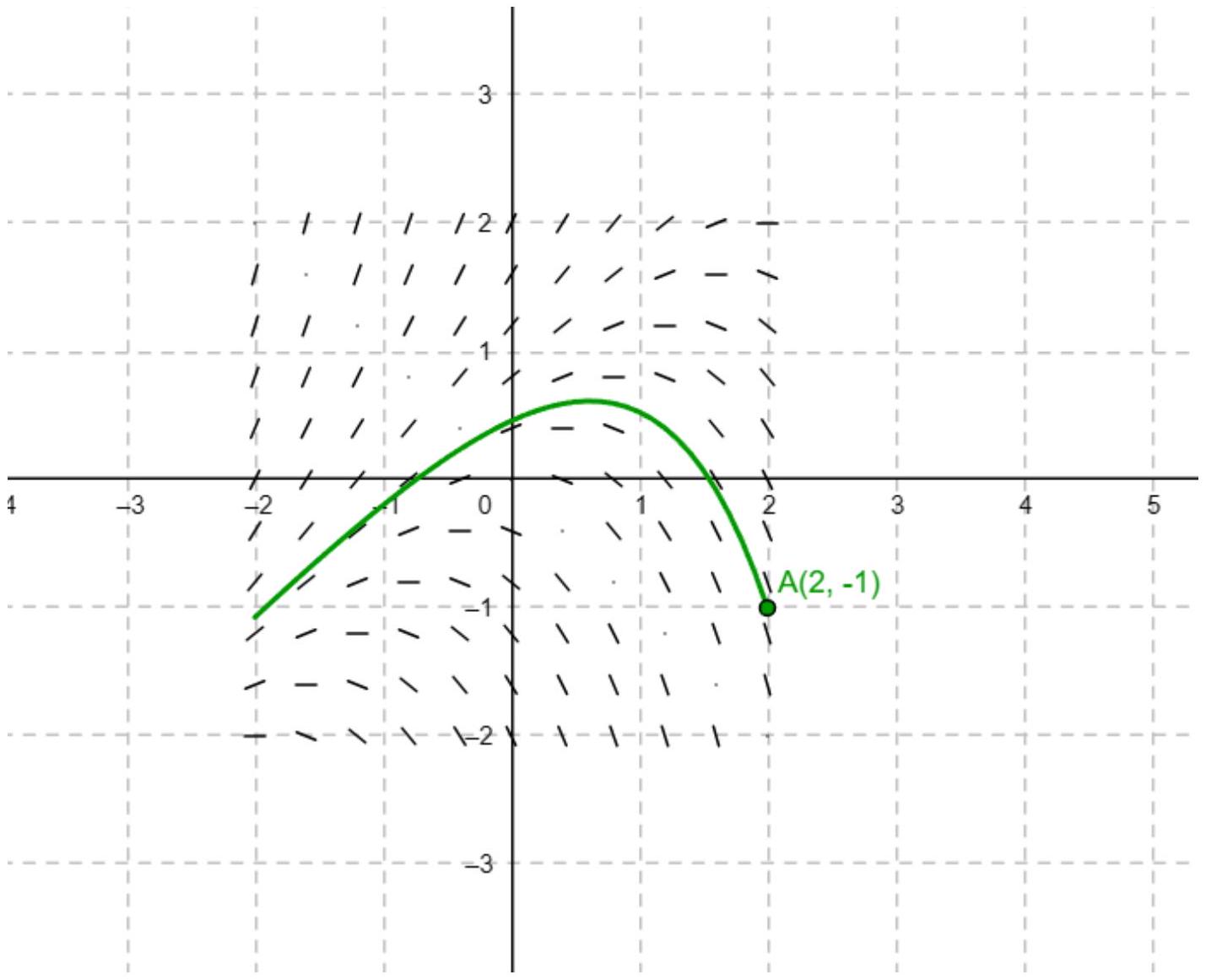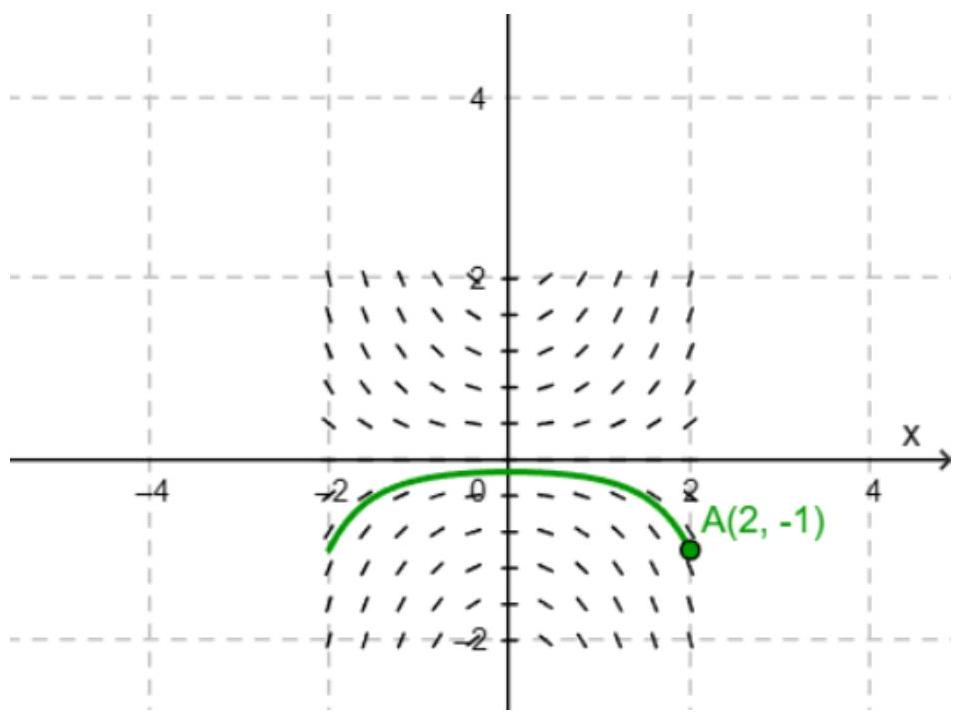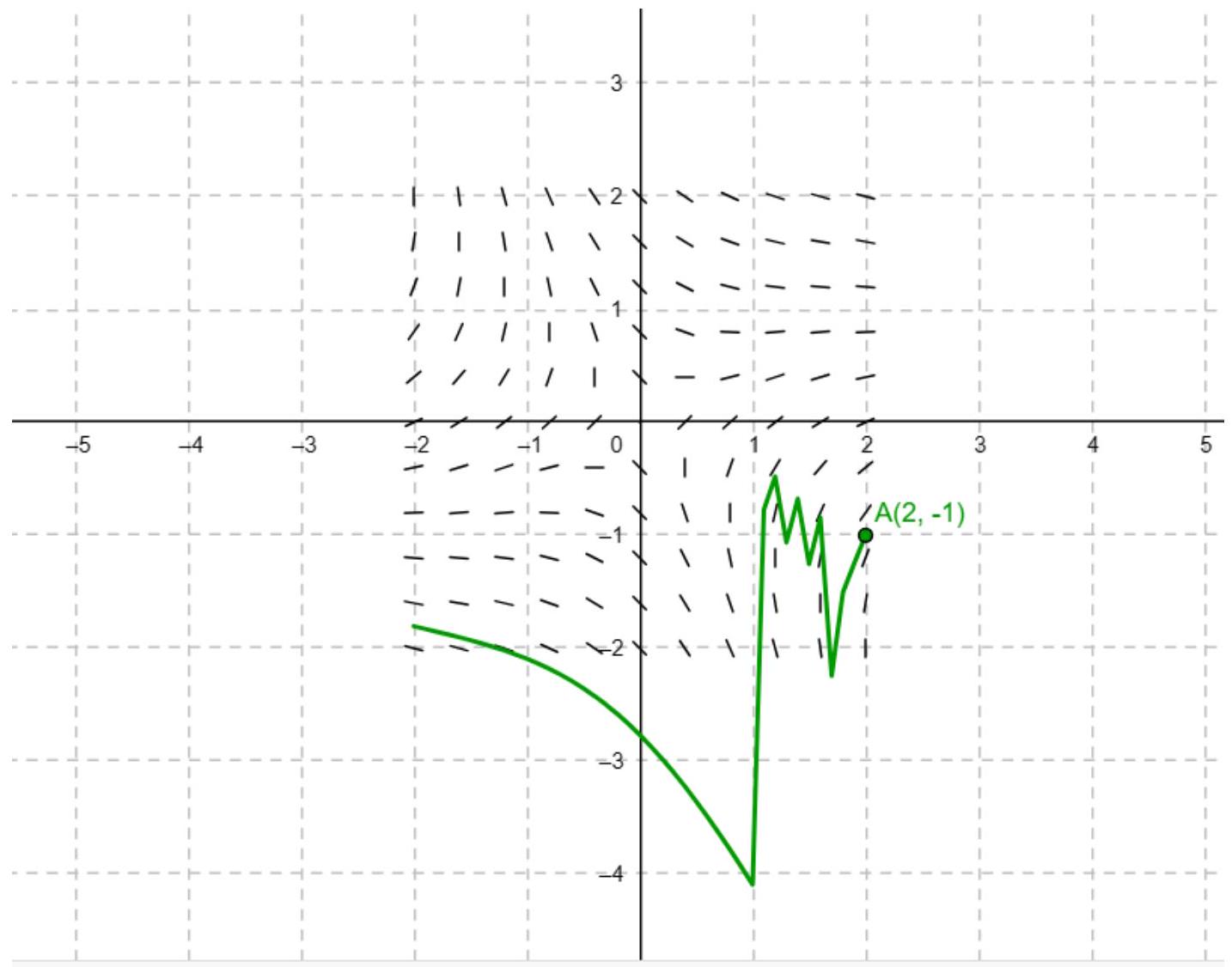Practice AHL 5.15—Slope fields with authentic IB Mathematics Applications & Interpretation (AI) exam questions for both SL and HL students. This question bank mirrors Paper 1, 2, 3 structure, covering key topics like core principles, advanced applications, and practical problem-solving. Get instant solutions, detailed explanations, and build exam confidence with questions in the style of IB examiners.
The slope field for , for , excluding , is shown below.

Find the equation of the curve where .
Sketch the curve from part (a) on the slope field.
Sketch the solution curve through .
Use Euler's method with step size 0.1 to approximate at .
Determine the coordinates of the intersection of the solution curve through with the curve from part (a).
Analyze the behavior of the solution curve as .
The differential equation , for , is defined for .
Calculate at .
Find the equation of the curve where .
Determine the nature of the points on the curve from part (b).
Find the equation of the tangent line to the solution curve through at .
Determine the -coordinate where the solution curve through crosses the line, if it exists, using qualitative analysis.
The slope field for , for , is shown below.

Find the equations of the curves where .
Sketch the curves from part (a) on the slope field.
Sketch the solution curve passing through .
Determine whether the solution curve from part (c) has any turning points. Justify your answer.
The slope field for , for , is shown below.

Write down the equation of the curves where .
Sketch the curves from part (a) on the slope field.
Sketch the solution curve passing through .
Determine the concavity of the solution curve from part (c) at (1, 1).
The slope field for the differential equation , for , is shown below.

Find the equation of the curve on which the points with zero gradient lie.
Sketch the curve from part (a) on the slope field above.
Sketch the solution curve that passes through the point .
Determine the coordinates of the point where the solution curve from part (c) intersects the curve found in part (a).
The differential equation , for .
Calculate at .
Find the equation of the curve where .
Determine the nature of the points on the curve from part (b).
Find the equation of the tangent line to the solution curve through .
Analyze the asymptotic behavior of the solution curve through as .
Consider the system:
for . The slope field for is shown below.

Find the equilibrium points of the system.
Sketch the curve where .
Sketch the solution curve through .
Determine the stability of the equilibrium point at .
Use Euler's method with step size 0.1 to approximate at .
Consider the differential equation , for , excluding . The slope field is shown below.
Calculate at .
Find the equation of the curve where .\n
Sketch the curve from part (b) on the slope field.
Sketch the solution curve through .
Use Euler's method with step size 0.1 to approximate at for the solution through .
Determine the concavity of the solution curve at .
Consider the differential equation , for .
Calculate the value of at the point .
Find the equation of the curve where the slope field has zero gradient.
Determine the nature of the points on the curve found in part (b) (e.g., maximum, minimum, or neither).
System: , for . Slope field for :
Find the equilibrium points of the system.
Sketch the curve where .
Sketch the solution curve through .
Determine the stability of the equilibrium point at .
Use Euler's method with step size 0.1 to approximate at .
Analyze the asymptotic behavior of the solution curve through as .